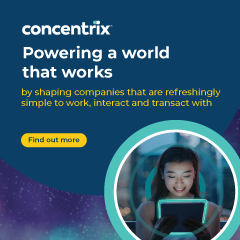What is the difference between Omnichannel and Multichannel retailing?
Retailers interested in increasing customer engagement and revenue must identify the distinction between omnichannel and multichannel retailing. This is crucial in order to meet customers’ expectations and understand how in-store technologies can enhance their strategies.
While both entail engaging with customers through multiple channels, the methods by which they do this and how they impact the customer experience are quite different.
One example is Joe Browns chairman Michael Truluck, who appeared at the most recent Omnichannel Futures event in March. Truluck is focused on going more omnichannel and leveraging all the data it gathers from its e-commerce business. Above all, this strategy underlines how businesses must now consider omnichannel retailing as a core objective in market positioning. Read the complete review of Omnichannel Futures 2024 for more details about the event.
Throughout this blog, we are going to explore both multichannel and omnichannel approaches, delving into the key differences in the omnichannel vs. multichannel debate. We will learn about those approaches and the benefits and challenges of choosing between them.
The difference between multichannel and omnichannel retail
Never Miss a Retail Update!Multichannel and omnichannel retailing are competing ways to win customers over different cross-platforms. Both of these options require multi-channel use but differ in an integration and customer experience sense.
Defining omnichannel retailing
An omnichannel approach highlights the customer by aligning their experience across all touchpoints to provide a seamless and frictionless interaction. It guarantees that customers receive the same service and information whether they shop online, in store, or through a mobile app on their preferred mobile device, all updated in real time. This is realised because of the possibility to synchronise information across several channels and provide updates virtually anywhere, as well as personalised interactions.
One such example is that a customer can look on their phone and browse the products, ask questions through chatbots or any other social messenger, and then come into a store to make the purchase. A complete end-to-end journey folds the data and interactions of a customer into one, smoothly delivering a seamless shopping experience that is personalised for them.
A survey found that 73% of consumers use several channels during their shopping experience. And omnichannel strategies provide up to 91% greater year-over-year customer retention rates than businesses without an omnichannel strategy
Defining multichannel retailing
The process of selling products through a variety of standalone or independent sales channels, like physical stores, e-commerce websites, or social media, is called multichannel retailing, which involves utilising various marketing channels. Every channel acts in its own universe, complete with separate management systems and strategies. That way, retailers have maximum exposure in the different channels.
A retailer, for example, could sell online via their website to consumers and use social media sites like Facebook or Twitter to market products and generate sales. Every channel represents a new touchpoint or customer preference to which the retailer has to cater. But because these channels are independent, the customer experience is fragmented.
Online and offline retail channels interactivity
Both omni-channel and multichannel retail leverage a mix of online as well as offline channels. Online retail stores, apps on mobiles and PCs, and social media are some of the digital channels that help reach digitally informed customers and facilitate smart shopping. Internet-based solutions aside, there are of course significant advantages to offline channels such as physical stores and in-person events that enable customers to have a hands-on experience with products and receive better service.
Digital channels in retail
Today, retail lives and dies through its digital channels. Just building an online store is not enough anymore; it must be fitted with all the popular and important features of e-commerce websites, mobile apps, and presence on social media channels in order to be able to reach today’s tech-savvy consumers. Through the integration of these channels, consumers can shop from anywhere and at anytime due to the convenience and variety of options.
Common digital channels used in retail:
- Marketplaces third-party platforms like Amazon, eBay, and Etsy, where retailers can list their products alongside competitors.
- Mobile apps offer personalised recommendations and easy navigation when shopping.
- Social media communicates directly with consumers through targeted marketing strategies that include personalised ad campaigns and outreach. According to industry experts, social media-driven sales are projected to reach approximately $2.9 trillion by 2026.
- Email marketing updates customers with the latest in new products, sales and exclusive offers (like the newsletters you get from your favourite stores)
- Chatbots provide instant customer support and assistance and, through this, improve customer satisfaction.
Offline channels in retail
Regardless of all digital options, offline channels still remain crucial. Physical stores allow customers to interact with products directly. This provides a tangible shopping experience that online channels cannot compete with. Physical stores also serve as important touchpoints for creating a personalised customer experience and interactions.
The key offline channels in retail are:
- Brick-and-mortar stores offer hands-on experience with products and in-person customer service.
- In-person events provide companies with the opportunity to engage their brand and build a community.
- Pop-up shops create a sense of urgency and excitement, which attracts customers who are looking for unique and temporary experiences.
Integrating digital channels with physical stores for a seamless customer journey
Although things have gone heavily digital for shopping, an ideal omnichannel strategy combines both digital and physical channels seamlessly in order to achieve a single omnichannel customer journey, exemplifying effective channel retailing.
To implement it, retailers must create a continuous shopper journey by developing online services and embedding in-store technologies that unite online and offline channels to deliver engaging and informed shopper experiences.
Research reveals that 55% of customers are going into stores to browse products before buying things online.
Some examples of channels and digital technology integration are:
- Free guest Wi-Fi and WiFi marketing: provides customers with free internet as well as capturing valuable customer data to use for future targeted marketing within the store.
- Product labels with QR codes: provide all the information about what consumers think of your product, along with additional materials and discounts for potential new customers.
- Virtual clienteling: offers customised shopping help that utilises advanced devices to unite the simplicity of online shopping with the administration you appreciate in a physical retailer.
- Mobile POS systems: faster checkouts with fewer lines and happier customers, helping to improve customer experience through digital transformation.
- Loyalty programmes: with a retail omnichannel loyalty programme, you can offer rewards and personalised offers based on comprehensive shopping behaviour
Adopting these technologies can help retailers provide a seamless and consistent shopping experience, ensuring that customers benefit from uniform treatment irrespective of whether they operate online or offline. To achieve these results it is essential to have a retail digital transformation strategy into the overarching strategy.
Omnichannel vs. Multichannel Retail: What is the right choice for your business?
Choosing between omnichannel and multichannel retailing depends on a variety of things: the resources of a retailer, their existing customer base, business goals, etc… To determine which approach works best for your business, you need to explore the benefits and challenges of each strategy.
Benefits and challenges of Omnichannel Retailing
Here are some of the benefits of an omnichannel strategy:
- Increased sales: more orders come in since the purchasing process is smoother.
- Enhanced personalisation: more data is reaching the system, meaning more focused marketing capabilities, especially when using retail loyalty software to track and analyse customer preferences. Learning how to implement omnichannel in retail can greatly enhance these operational efficiencies.
- Efficient operations: inventory control, streamlined order fulfilment process, and more focused marketing capabilities.
Challenges:
- High investment: high demand of financial and technological resources
- Integration complexity: even with the effort put in by all ERP developers, integrating different systems and platforms remains a complicated affair.
- Consistency maintenance: issues with keeping the brand elements intact across all platforms.
Benefits and challenges of multichannel retailing
Some of the benefits of a multichannel approach include:
- Wider reach: a multichannel approach provides access to diverse customers.
- Flexibility: the ability to customise strategies for different channels.
- Lower initial investment: less costly to implement compared to omnichannel strategies.
Challenges:
- Fragmented experience: customer interactions across channels can be inconsistent.
- Inefficient management: managing each channel separately can be a headache.
- Data silos: Difficulty in merging customer data from various channels.
Final thoughts
In summary, there are obvious benefits and challenges to both omnichannel retailing as well as multichannel. Retailers need to closely evaluate the resources available, customer behaviour, and their objectives in order to decide on this aspect. The dynamic pattern of customer experience that the advantages of omnichannel retailing create are worth the large investment and effort required to integrate it correctly. Conversely, multichannel retailing allows for greater adaptability and expansion – but at the risk of a disjointed customer journey.
Retailers seeking to thrive in this competitive market must, therefore, implement an omnichannel strategy that will lead to happier customers. By merging digital and physical stores, retailers may create a seamless and entertaining buying experience that satisfies the changing expectations of customers today, driven by a customer centric approach.
Learn how to create effective omnichannel strategies, bridge the gap between online and offline, and stay on top of industry trends at our retail events, Omnichannel Futures and The Retail Conference.
These events provide valuable opportunities to learn from industry experts and network with peers, helping you stay ahead of the game.
Register now for one of our brilliant retail events here.













